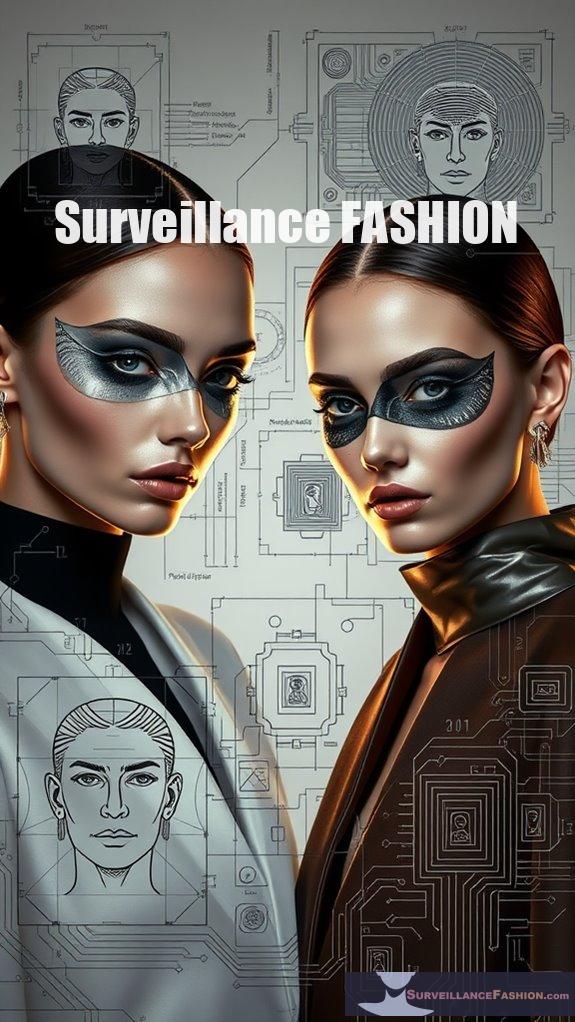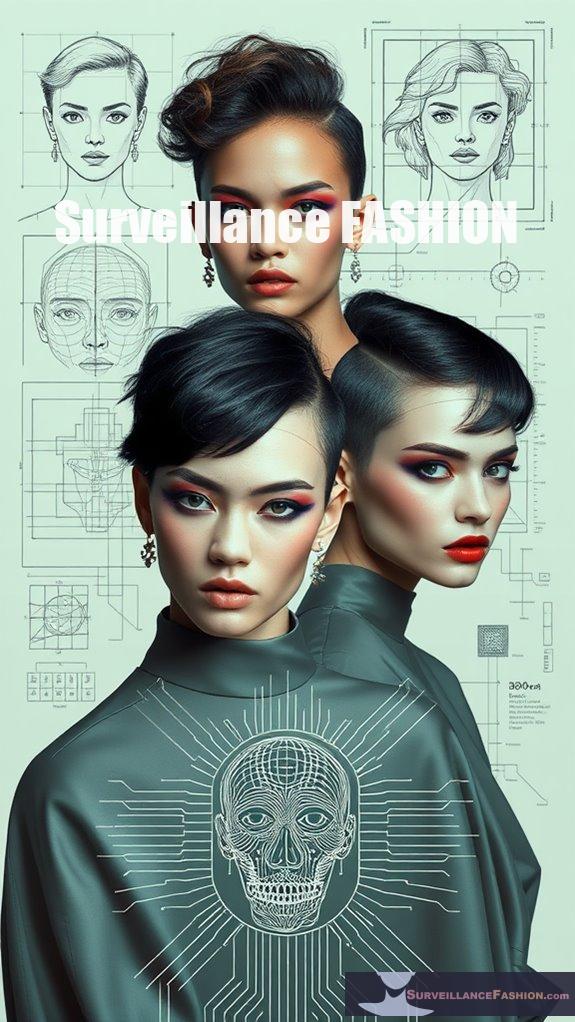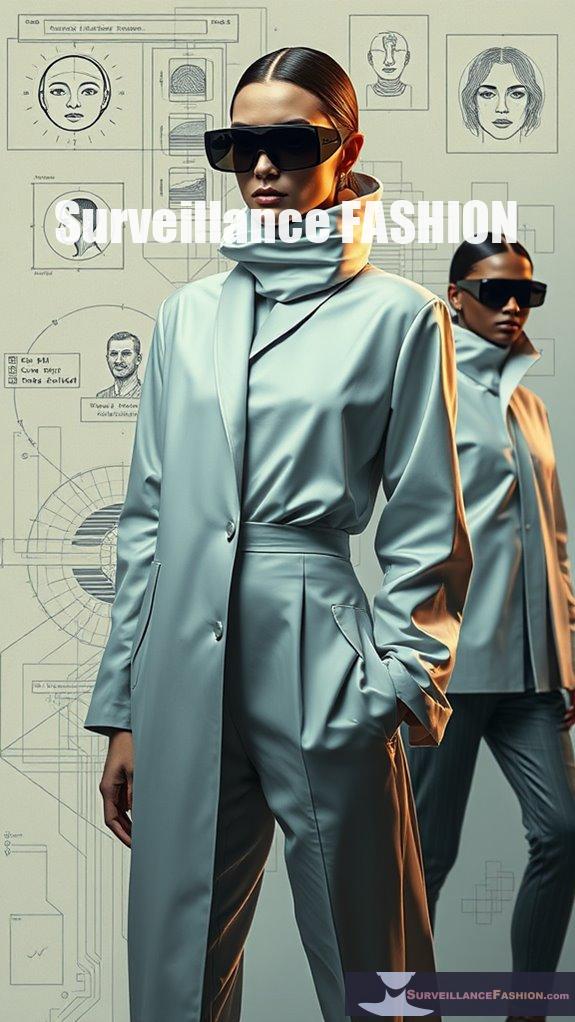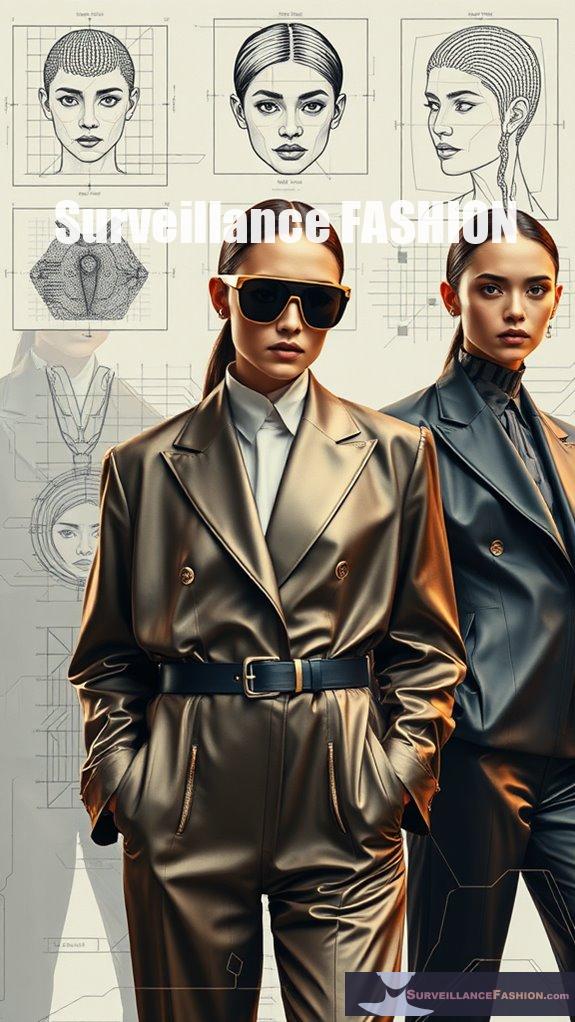Ever thought about how to hide from the all-seeing eyes of surveillance?
Let me tell you, I once walked into a party looking like a Picasso painting. I used CV Dazzle techniques—high-contrast makeup and asymmetrical designs, all to confuse those pesky facial recognition algorithms.
Sure, I got a few weird looks, but hey, I was invisible!
With natural bristles for precision and accessories that sparkled like a disco ball, I felt like a stealthy ninja of identity.
But let's be real—how often do we really need to hide?
—
Embracing Minimalism: A Journey to Identity Protection
I remember decluttering my closet one rainy afternoon, realizing that less is truly more. I ditched the excess and kept only the essentials—like my trusty oversized sunglasses and a chic hat.
These pieces became my armor against prying eyes. Each item holds a story, and I felt liberated, shedding the pressure of constant surveillance.
Minimalism isn't just about owning fewer things; it's about carving out a space for privacy in a world that tries to know everything about us. Who knew simplifying my life would also protect my identity?
Quick Takeaways
- Use asymmetrical makeup techniques to disrupt facial symmetry and confuse facial recognition algorithms targeting key landmarks.
- Incorporate high-contrast colors and geological patterns to obscure facial features and alter textures effectively.
- Combine theatrical cosmetics with contouring to mimic target characteristics and enhance evasion from biometric systems.
- Employ accessories like hats, scarves, and reflective eyewear to physically shield your face from recognition technologies.
- Explore fashion trends designed with privacy features, such as adaptive camouflage and distracting patterns, to enhance personal privacy.
Understanding CV Dazzle Techniques

In the domain of contemporary aesthetics and technology, CV Dazzle techniques emerge as a fascinating intersection of art and science, offering individuals a means to navigate the complexities of facial recognition systems.
Drawing from makeup history and innovative camouflage techniques, these methods exploit algorithm vulnerabilities by manipulating light and dark areas on the face. High-contrast makeup, often black and white, disrupts expected facial symmetry, while asymmetric styling occludes key features. CV Dazzle was initially designed to target the Viola-Jones face detection algorithm, showcasing its ability to thwart machine vision systems while remaining visible to humans. This approach has proven effective against facial recognition algorithms that rely on detecting facial landmarks.
Inspired by WWI dazzle camouflage, CV Dazzle adapts to advancing technologies, embodying not just a practical response to surveillance but also a form of artistic expression within the movement for privacy awareness.
Essential Makeup Tools and Materials
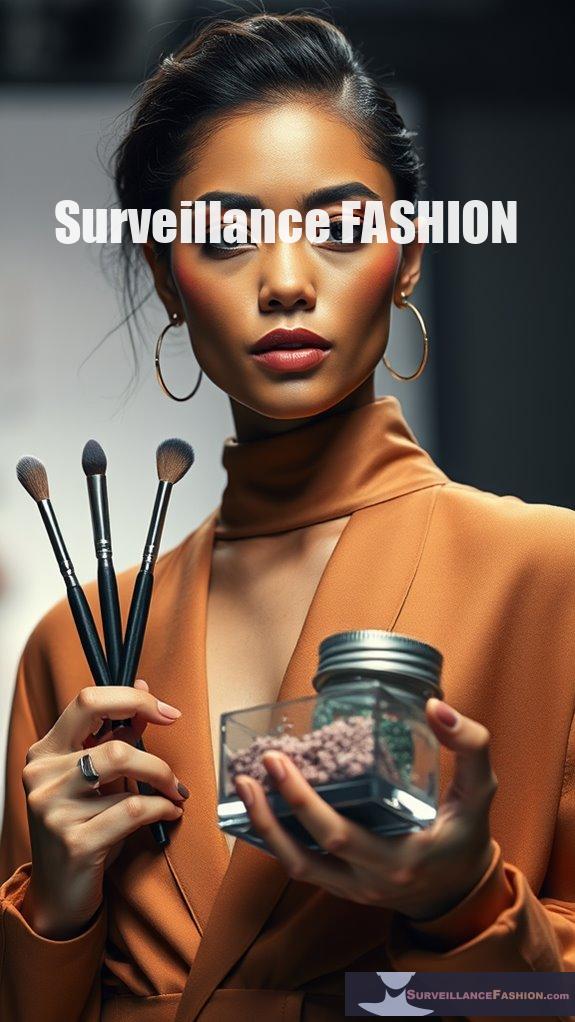
The application of makeup has evolved considerably, especially when considering its intersection with technology and personal expression. To effectively navigate this environment, understanding essential makeup materials and beauty tools is vital. Durable metals like stainless steel and aluminum are favored for their versatility in beauty tools, while elegant glass containers enhance user experience. Metal tools often provide a professional and polished appearance, making them a popular choice among makeup enthusiasts. The use of anti-facial recognition techniques in makeup application is becoming increasingly significant in today's tech-driven society.
Natural bristles in luxury brushes offer gentle application, and silicone sponges guarantee flexibility. Packaging often utilizes resilient plastics, such as polypropylene, combining functionality with aesthetic appeal. As we explore these materials, it's clear that sustainable practices are emerging, reflecting a growing commitment to mindful beauty—an ethos that inspired our creation of Surveillance Fashion.
Key Makeup Strategies for Obscuring Features

While traditional makeup application often highlights and enhances facial features, key strategies for obscuring those features have emerged, especially in the framework of evading facial recognition technologies. To disrupt detection algorithms, consider employing asymmetrical makeup that skews typical facial symmetry, utilizing techniques targeting prominent landmarks like the nose bridge and eyes. Incorporating geological patterns inspired by CV Dazzle, and layering contrasting colors, can further confuse recognition systems. Additionally, utilizing anti-surveillance methods can enhance the effectiveness of your makeup by creating a more unpredictable visual profile. Moreover, hairstyles and fashion accessories can obscure facial contours, enhancing the illusion of irregularity. These methods not only empower individual expression but also align with our mission at Surveillance Fashion to navigate an increasingly monitored world. Notably, makeup presentation attacks maintain liveness cues, making them effective against detection systems.
Limitations of Computer Vision Makeup

As you explore the terrain of computer vision makeup, recognizing its limitations becomes essential for understanding how effectively these techniques can obscure facial features in the face of advanced recognition systems.
Occlusion challenges arise when masks or other makeup techniques obscure critical facial elements, greatly impairing recognition accuracy. For instance, while masks can halve performance, eye occlusions also diminish effectiveness but to a lesser degree.
Furthermore, the privacy implications of using such makeup techniques can complicate ethical concerns surrounding surveillance technologies. Ultimately, tailored approaches and ongoing algorithm improvements are necessary to address these limitations and enhance personal freedom in an increasingly monitored world.
Makeup Presentation Attacks Explained
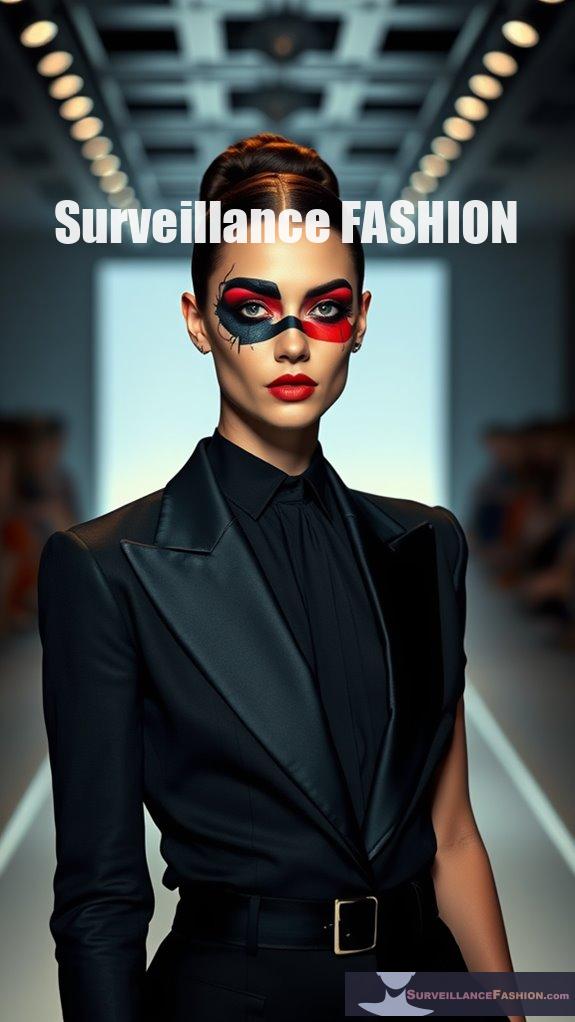
Makeup presentation attacks (M-PAs) represent a fascinating intersection of artistry and technology, where individuals leverage cosmetics to manipulate their facial appearance for various motives, ranging from impersonation to evasion of biometric recognition systems.
Utilizing impostor techniques, skilled makeup artists apply concealment methods to alter facial textures and shapes, thereby challenging facial recognition algorithms. For instance, theatrical cosmetics and strategic contouring can effectively mimic target features, achieving a deceptive likeness.
As social media illustrates, these transformations can be striking, revealing vulnerabilities in biometric security systems. Ultimately, understanding M-PAs empowers individuals, highlighting the need for innovative approaches to combat identity concealment and impersonation.
Countermeasures to Facial Recognition Detection
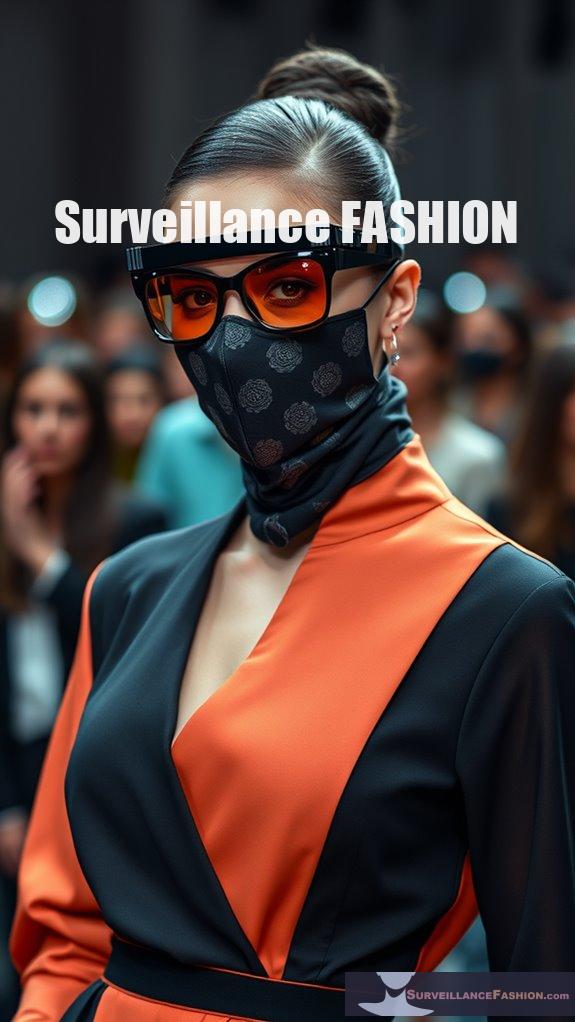
Facial recognition technology continues to advance, prompting a need for effective countermeasures that individuals can utilize to protect their identities.
To enhance your digital privacy, consider physical and digital strategies for facial obfuscation. For example, wearing hats or reflective eyewear can obscure your features physically, while tools like Fawkes can corrupt your uploaded images online.
Moreover, using face masks in appropriate settings or employing infrared disruptors can further shield your identity.
Combining these methods into an extensive strategy not only helps deter surveillance but also emphasizes the importance of personal freedom in an increasingly monitored world.
Disruptive Color Patterns
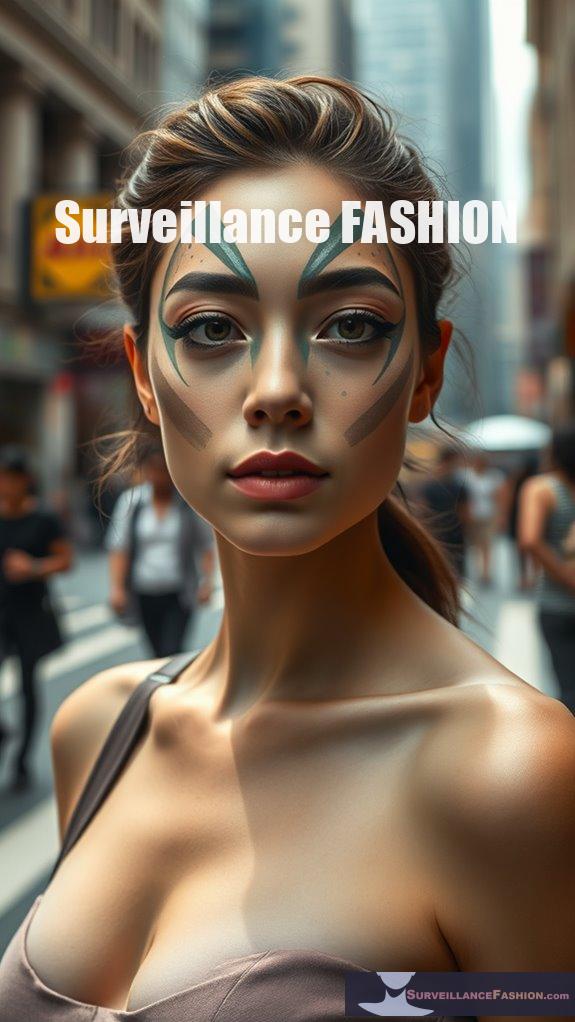
Disruptive color patterns, which cleverly manipulate visual perception, can greatly enhance your ability to obscure your identity in an age of increasing surveillance.
By employing high-contrast designs that promote visual fragmentation, you can effectively confuse facial recognition technologies.
- Use non-repetitive configurations for unpredictability.
- Incorporate spots, stripes, or geometric shapes to break outlines.
- Combine these patterns with other techniques like background matching.
- Experiment with color contrasts to distract from facial features.
- Stay versatile across different environments, ensuring adaptability.
Incorporating these disruptive patterns into your makeup can provide significant advantages in maintaining your privacy.
Visual Disruption Techniques
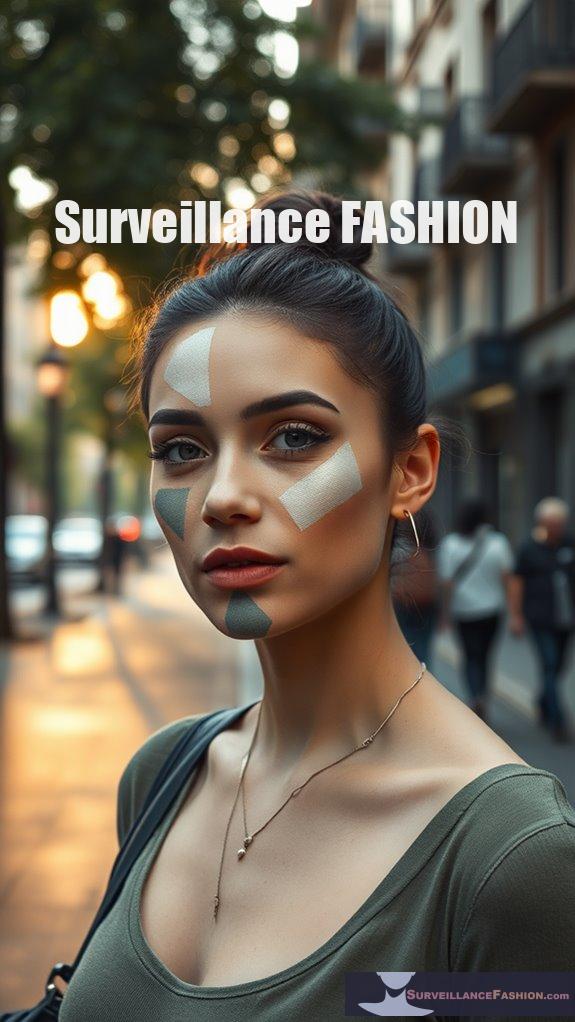
Visual disruption techniques encompass a range of strategies designed to confound the visual processing systems employed by various forms of computer vision, effectively rendering traditional identification methods less reliable.
Fashion for Evading Recognition

In an era characterized by ubiquitous surveillance, the intersection of fashion and privacy emerges as a compelling domain, where innovative designs not only challenge traditional aesthetics but also serve as shields against invasive recognition technologies.
Consider these fashion trends that blend style with protection:
- Anti-paparazzi scarves using reflective materials
- Face masks, practical in common environments
- Temporary face paintings for obscuring features
- Patterned clothing with distracting prints
- Adaptive camouflage jackets reflecting varied colors
These innovations reflect a growing awareness of privacy rights, as more individuals seek to navigate a world increasingly dominated by surveillance technologies while maintaining their personal freedom.
References
- https://adam.harvey.studio/cvdazzle/
- https://www.mdpi.com/1424-8220/20/13/3739
- https://antispoofing.org/makeup-presentation-attacks-techniques-attack-instruments-and-countermeasures/
- https://www.myecole.it/biblio/wp-content/uploads/2020/11/2020-Fairness-book.pdf
- https://www.youtube.com/watch?v=kGGnnp43uNM
- https://en.wikipedia.org/wiki/Computer_vision_dazzle
- https://www.stencilarchive.org/content/scramble-face-recognition-tech-cv-dazzle-camouflage
- https://corazzamarketing.com/face-recognition-camouflage/
- https://radicaldata.org/projects/cv-dazzle/
- https://www.zintilon.com/blog/common-6-materials-in-the-beauty-industry/


